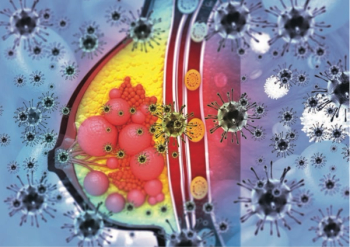
Researchers Investigate Potential New Tool in Diagnosing Breast Cancer
A new clinical trial is recruiting to determine whether a breath testing device can aid in the diagnosis of breast cancer.
At the University of Southern California (USC) Norris Comprehensive Cancer Center, researchers currently are actively recruiting for a clinical trial assessing the effectiveness of a breath test for breast cancer diagnostics.
The researchers will be using the BreathLink™ device (Menssana Research, Inc), which captures a two-minute sample of a patient’s breath and provides immediate results on whether there are indications of breast cancer. If proven effective, the test would be used in conjunction with mammograms to rule out false-positive tests, sparing patients the pain, cost, and anxiety of unnecessary biopsies.
Study investigator Linda Hovanessian-Larsen, MD, an associate professor of clinical radiology and director of Women’s Imaging at the Keck School of Medicine of USC, Los Angeles, California, said diagnosing breast cancer requires the utmost vigilance. However, she said there is a need to temper this vigilance with accuracy to prevent unnecessary procedures.
“The developers of BreathLink found that women with breast cancer have an altered pattern of volatile organic compounds in their breath that is different from normal, healthy women. The BreathLink system analyzes the volatile organic compounds in breath with gas chromatography in the hopes that we can identify women who are at most risk for breast cancer. However, we are still in the earliest stages of this clinical trial,” Dr. Hovanessian-Larsen told OncoTherapy Network.
Dr. Larsen said this type of technology would be a welcome asset to the field, and she and her colleagues are eager to assess the safety and efficacy of this test. Breath volatile organic compounds contain biomarkers of breast cancer that are detectable with gas chromatography mass spectrometry, according to the researchers. However, the pathophysiologic mechanisms underlying breath biomarkers of breast cancer are not known.
The researchers contend that increased oxidative stress in breast tissue provides a plausible mechanism that links cancer development with altered biomarkers in breath. In breast cancer, almost 80% of stromal fibroblasts acquire an activated phenotype that produces hydrogen peroxide, which induces tumorigenic alterations in epithelial cells. Hydrogen peroxide is a powerful oxidant that causes oxidative stress in tissues, which is known to peroxidate polyunsaturated fatty acids in cell membranes, liberating volatile n-alkanes, which can be released in the breath.
BreathLink is a noninvasive testing device that collects, concentrates, and analyzes the organic compounds in a patient’s breath sample within minutes. Although the test cannot diagnose disease, it can indicate if the patient should undergo further testing, which can save time and money while preventing additional emotional distress.
“With about 32 million screening mammograms and about 1.6 million biopsies performed per year, anywhere from 60% to 80% are benign. With so many false alarms, we need to improve the field of breast cancer diagnostics. This trial may be one way of doing that,” said Dr. Hovanessian-Larsen.
Newsletter
Stay up to date on recent advances in the multidisciplinary approach to cancer.

















































































